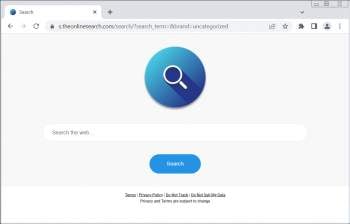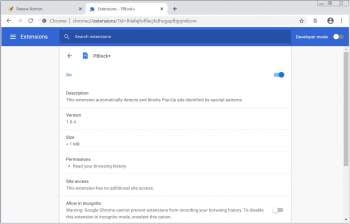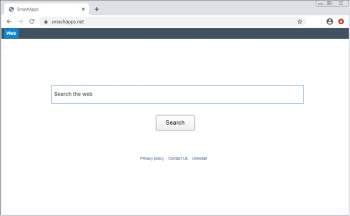-
Microsoft shares how SolarWinds hackers evaded detection
Microsoft today shared details on how the SolarWinds hackers were able to remain undetected by hiding their malicious activity inside the networks of breached companies.
- January 20, 2021
- 03:54 PM
 0
0
-
SolarWinds hackers used 7-Zip code to hide Raindrop Cobalt Strike loader
The ongoing analysis of the SolarWinds supply-chain attack uncovered a fourth malicious tool that researchers call Raindrop and was used for distribution across computers on the victim network.
- January 19, 2021
- 02:09 PM
 0
0
-
SolarWinds hackers had access to over 3,000 US DOJ email accounts
The US Department of Justice said that the attackers behind the SolarWinds supply chain attacks have gained access to roughly 3% of the department's Office 365 email inboxes.
- January 06, 2021
- 02:05 PM
 0
0
-
Microsoft: SolarWinds hackers' goal was the victims' cloud data
Microsoft says that the end goal of the SolarWinds supply chain compromise was to pivot to the victims' cloud assets after deploying the Sunburst/Solorigate backdoor on their local networks.
- December 29, 2020
- 01:30 PM
 1
1
-
SolarWinds victims revealed after cracking the Sunburst malware DGA
Security researchers have shared lists of organizations where threat actors deployed Sunburst/Solarigate malware, after ongoing investigations of the SolarWinds supply chain attack.
- December 22, 2020
- 09:11 AM
 3
3
-
VMware latest to confirm breach in SolarWinds hacking campaign
VMware is the latest company to confirm that it had its systems breached in the recent SolarWinds attacks and said that the hackers did not make any attempts of further exploitation after gaining access through the deployed backdoor.
- December 21, 2020
- 10:38 AM
 2
2
-
New SUPERNOVA backdoor found in SolarWinds cyberattack analysis
While analyzing artifacts from the SolarWinds Orion supply-chain attack, security researchers discovered another backdoor that is likely from a second threat actor.
- December 21, 2020
- 09:17 AM
 1
1
-
The SolarWinds cyberattack: The hack, the victims, and what we know
Since the SolarWinds supply chain attack was disclosed in December, there has been a whirlwind of news, technical details, and analysis released about the hack. Because the amount of information that was released in such a short time is definitely overwhelming, we have published this as a roundup of SolarWinds news.
- December 19, 2020
- 10:10 AM
 13
13
-
Microsoft identifies 40+ victims of SolarWinds hack, 80% from US
Microsoft said that over 40 of its customers had their networks infiltrated by hackers following the SolarWinds supply chain attack after they installed backdoored versions of the Orion IT monitoring platform.
- December 18, 2020
- 08:56 AM
 1
1
-
Microsoft confirms breach in SolarWinds hack, denies infecting others
Microsoft has confirmed that they were hacked in the recent SolarWinds attacks but denied that their software was compromised in a supply-chain attack to infect customers.
- December 17, 2020
- 07:59 PM
 2
2
-
SolarWinds hackers breach US nuclear weapons agency
Nation-state hackers have breached the networks of the National Nuclear Security Administration (NNSA) and the US Department of Energy (DOE).
- December 17, 2020
- 04:29 PM
 0
0
-
US think tank breached three times in a row by SolarWinds hackers
An advanced hacking group believed to be working for the Russian government has compromised the internal network of a think tank in the U.S. three times.
- December 17, 2020
- 03:17 PM
 0
0
-
CISA: Hackers breached US govt using more than SolarWinds backdoor
The US Cybersecurity and Infrastructure Security Agency (CISA) said that the APT group behind the recent compromise campaign targeting US government agencies used more than one initial access vector.
- December 17, 2020
- 12:48 PM
 1
1
-
FBI, CISA officially confirm US govt hacks after SolarWinds breach
The compromise of multiple US federal networks following the SolarWinds breach was officially confirmed for the first time in a joint statement released earlier today by the FBI, DHS-CISA, and the Office of the Director of National Intelligence (ODNI).
- December 17, 2020
- 09:39 AM
 0
0
-
FireEye, Microsoft create kill switch for SolarWinds backdoor
Microsoft, FireEye, and GoDaddy have collaborated to create a kill switch for the SolarWinds Sunburst backdoor that forces the malware to terminate itself.
- December 16, 2020
- 04:21 PM
 1
1
-
Microsoft to quarantine compromised SolarWinds binaries tomorrow
Microsoft has announced today that Microsoft Defender will begin quarantining compromised SolarWind Orion binaries starting tomorrow morning.
- December 15, 2020
- 04:46 PM
 0
0
-
US govt, FireEye breached after SolarWinds supply-chain attack
Trojanized versions of SolarWinds' Orion IT monitoring and management software have been used in a supply chain attack leading to the breach of government and high-profile companies after attackers deployed a backdoor dubbed SUNBURST or Solorigate.
- December 14, 2020
- 10:04 AM
 3
3
 0
0


















